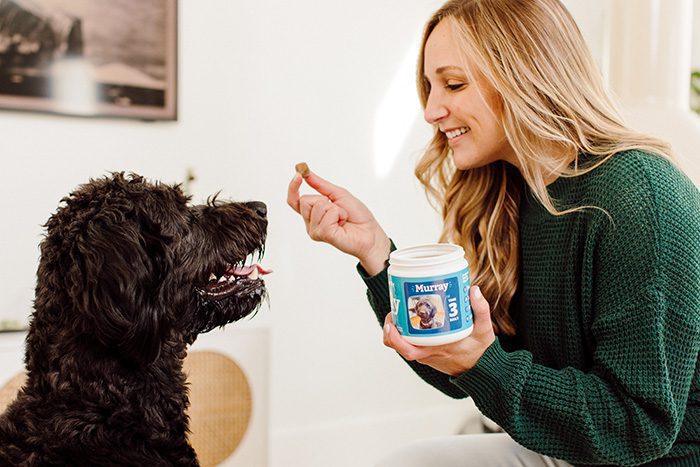Newfoundland dogs, often hailed as gentle giants, boast a rich history intertwined with Canada’s maritime heritage.
Originating from the island of Newfoundland, these dogs were indispensable to local fishermen. They served as loyal companions and hardworking assets in demanding coastal environments.
Renowned for their impressive size—typically weighing between 100 to 150 pounds—Newfoundlands combine raw strength with a calm, affectionate disposition, making them ideal family protectors.
Their thick, water-resistant coats and exceptional swimming abilities trace back to their historical role as “lifeguards of the high seas,” where they fearlessly rescued individuals from treacherous waters.
Beneath their majestic exterior lies a keen intelligence and a strong desire to please, traits that make them highly responsive to patient, reward-based guidance.
Key Characteristics of Newfoundlands:
- Historical Role: Worked alongside Canadian fishermen, hauling nets and serving as devoted companions.
- Physical Traits: Large build (100–150 lbs), water-resistant coat, and a muscular frame optimized for water rescue missions.
- Temperament: Gentle, intuitive, and deeply loyal, with a natural affinity for children and a proven ability to thrive in family settings.
Why Training is Crucial for Newfoundlands
Given their substantial size and muscular frame, structured training is vital to ensure these dogs mature into well-adjusted companions.
Without proper direction, their strength can become unmanageable, particularly in bustling households or public spaces.
Early exposure to varied environments, coupled with consistent obedience exercises, fosters confidence and prevents behavioral issues.
Newfoundland training should prioritize positive reinforcement techniques, leveraging their natural eagerness to learn and please their owners.
This approach not only strengthens the bond between dog and owner but also channels their energy into constructive behaviors, ensuring a harmonious coexistence.
For families welcoming a Newfoundland puppy, investing time in training isn’t just beneficial—it’s essential for nurturing a well-mannered, adaptable pet.
By blending their storied past with modern training strategies, owners can unlock the full potential of these noble dogs, transforming their inherent strengths into lifelong virtues.

Understanding Newfoundland Behavior
A Temperament Rooted in Loyalty and Gentleness
Newfoundlands are revered for their calm demeanor and innate devotion to family, earning them the endearing nickname “nanny dogs” due to their natural affinity with children.
Their temperament blends patience, affection, and an almost human-like intuition, making them ideal companions for households seeking both emotional connection and quiet strength.
Historically bred for water rescue and coastal work, these dogs carry a legacy of bravery and selflessness, yet their modern role as family protectors highlights their gentle, non-aggressive nature.
Common Behavioral Challenges and How to Navigate Them
While Newfoundlands thrive as companions, their unique traits, shaped by centuries of working alongside humans, require thoughtful management:
- Size and Strength: Weighing 100–150 pounds, their sheer bulk can lead to accidental knocks or toppled objects, especially during play or excitement. Early obedience training is crucial to teach boundaries and prevent unintentional mishaps.
- Independent Streak: Despite their eagerness to please, Newfoundlands can exhibit stubbornness, particularly during puppyhood. Consistent, positive reinforcement techniques work best, leveraging their intelligence and desire to collaborate rather than resist.
- Water Obsession: Their historical role as water rescuers means many Newfies are irresistibly drawn to pools, lakes, or even puddles. While this affinity is charming, it can create logistical challenges indoors, requiring creative training solutions like designated play areas or post-swim routines.
How Working Heritage Shapes Behavior and Training
Newfoundlands have a rich history as lifesaving working dogs, known for their strength, intelligence, and resilience.
Their heritage makes them well-suited for problem-solving tasks like agility or advanced obedience training.
However, due to their protective nature, they require early and consistent socialization to remain calm around strangers.
Structured, real-world training helps direct their instincts positively. With patience, consistency, and an appreciation for their working roots, Newfoundlands can become gentle, loyal, and capable companions.

Getting Started with Training
When to Begin: Laying the Foundation Early
The optimal window for introducing training opens as soon as you welcome a Newfoundland puppy into your home, typically between 8–12 weeks of age .
This critical period shapes their adaptability to routines, such as potty training or crate acclimation, which sets the stage for long-term success.
However, even adult Newfoundlands—whether adopted or transitioning from rescue backgrounds—can thrive under patient, consistent guidance.
While puppies absorb lessons rapidly, older dogs benefit from structured reinforcement that respects their maturity and prior experiences.
Newfoundland Puppy Training Essentials: Tools for Success
Equipping yourself with the right supplies transforms training from a challenge into a rewarding experience. Focus on items that align with their physical needs and learning style:
- High-Value Treats: Small, aromatic rewards like cooked chicken or liver pieces act as powerful motivators during short, focused sessions. These treats tap into their food-driven nature, making commands like “sit” or “stay” more engaging.
- Harness and Leash: A sturdy front-clip harness distributes pressure evenly, preventing strain on their broad chest while offering control during walks or outdoor exercises. Pair it with a durable leash to reinforce calm movement.
- Crate and Comfort Items: Position the crate in a central area of your home, covered on three sides for security, to create a den-like space where your dog feels safe during breaks. Include soft bedding and chew toys to discourage destructive habits.
- Clicker (Optional): For advanced learners, a clicker can mark precise moments of success, bridging the gap between action and reward. This tool works best when paired with treats and verbal praise.
Creating the Right Environment: Minimizing Distractions
A quiet room or enclosed yard serves as an ideal training ground, free from overwhelming stimuli that might derail focus.
Newfoundlands, though eager to learn, can become sidetracked by loud noises or unfamiliar faces due to their gentle, observant nature.
Start with basic commands in a controlled setting, gradually introducing variables like other pets or mild outdoor sounds as their confidence grows.
Consistency in location and routine also reinforces trust, especially during potty training or crate acclimation phases.
Training Adults: Patience and Purpose
Rescue dogs or mature Newfoundlands may require extra time to unlearn ingrained behaviors, but their intelligence and loyalty make progress achievable.
Focus on building rapport through positive reinforcement, celebrating small victories like responding to their name or mastering a loose-leash walk.
For persistent challenges, such as stubbornness during recall drills, break tasks into manageable steps and maintain a calm, encouraging tone.
Remember, their working heritage thrives on purposeful activity, so incorporating games like fetch or scent work can channel their energy into productive outlets.
Basic Obedience Training
Building a Foundation: Core Commands for Gentle Giants
Newfoundlands, with their rich history as water rescuers and working partners, thrive under structured guidance that aligns with their intelligence and sensitivity.
Teaching fundamental commands not only ensures safety but also strengthens the bond between dog and owner, transforming their instincts into cooperative behaviors.
Focus on these key skills:
- Sit: Begin with a high-value treat near their nose, slowly lifting it upward to encourage their rear to lower. For larger dogs, gently press the hindquarters while pairing the motion with the word “sit”.
- Stay: Start with short durations, stepping away while maintaining eye contact. Gradually increase distance and time, rewarding calmness. This command is vital for managing their strength in public spaces.
- Come: Use an upbeat tone and open arms to create a positive association. Avoid calling them only for unappealing tasks (e.g., nail trims) to prevent reluctance.
- Down: Lure them into a lying position with a treat along their front paws. Pair the action with “down” and reward immediately. This helps redirect energy into restful behavior.
- Heel: Practice in a quiet space with a loose leash, rewarding them for walking beside you without pulling. A front-clip harness aids control, especially during recalls.
Techniques That Respect Their Sensitivity
Newfoundlands respond best to positive reinforcement, leveraging their eagerness to please and food-driven nature.
Harsh corrections or raised voices can erode their trust, given their history of working harmoniously alongside humans. Instead:
- Use high-value treats like chicken or liver pieces during short, focused sessions. These rewards reinforce quick learning and keep them engaged.
- Pair verbal praise (“good boy!”) with physical affection, such as ear scratches. Their intuitive personalities thrive on emotional connection.
- Maintain consistency in commands and expectations. For example, if “stay” means remaining in place until released, enforce this rule without exceptions to avoid confusion.
Tailoring Commands for a Large Breed
Their imposing size (100–150 lbs) requires thoughtful adaptations to ensure training remains effective and safe:
- Harness over collar: A well-fitted harness prevents neck strain and provides better control during heeling or recalls. Opt for one designed for large breeds with broad chests.
- Firm but gentle cues: Use clear, decisive hand signals paired with calm vocal tones. For instance, a flat palm facing downward for “stay” avoids overwhelming them while maintaining authority.
- Break down complex tasks: Teach “come” in stages—start in a quiet yard, then introduce distractions like parks. This mirrors their historical need to focus amid chaotic environments (e.g., stormy shores).
Managing Challenges with Creativity
Newfoundlands’ water-loving instincts and occasional stubbornness demand flexibility.
If their affinity for puddles derails focus, incorporate water-related rewards (e.g., a splash session post-training).
For independent streaks, turn commands into games—like “find it!” with hidden treats—to tap into their problem-solving heritage.
Socialization: Building Confidence in Gentle Giants
Why Socialization Matters for Newfoundlands
Newfoundlands, though naturally affectionate, require deliberate socialization to prevent fearfulness or overexcitement—traits that can become amplified by their imposing 100–150 lb frame.
Without early exposure to diverse environments, these dogs may struggle to navigate everyday situations, such as crowded parks or loud household guests.
Their historical role as water rescuers demanded calm decisiveness, a trait that modern training must preserve through structured socialization.
A Step-by-Step Guide to Socializing Your Newfoundland
For Puppies:
- Start Early: Begin socialization between 8–12 weeks, focusing on low-risk exposures like quiet sidewalks or vaccinated friends’ homes . Use high-value treats to create positive associations with new stimuli.
- Vaccination-First Approach: Wait until your puppy completes their initial shots before introducing group classes or dog parks. Prioritize controlled settings, such as backyard playdates with calm adult dogs.
- Sound Sensitivity: Expose them to household noises (vacuums, doorbells) early, as Newfoundlands can develop wariness of sudden sounds . Pair each noise with a reward to build confidence.
For Adults:
- Reintroduce Gradually: Rescue dogs or late-adopted Newfoundlands benefit from slow, positive re-socialization. Begin with calm, predictable environments and gradually introduce distractions.
- Leverage Their Heritage: Channel their water rescue instincts by practicing obedience near lakes or pools, turning socialization into purposeful activity.
Raising Safe, Gentle Companions for Families
Newfoundlands earn their “nanny dog” reputation through patience and intuition around children, but this trait requires nurturing.
Unsupervised interactions, especially with toddlers, can lead to accidental knocks due to their size. To foster safe play:
- Teach Boundaries: Use commands like “gentle” or “leave it” when they nudge too hard during play. Reward calm behavior with praise or treats.
- Supervise Actively: Even with older children, monitor play sessions to redirect overexcitement. For example, if your dog jumps, pause the game and ask them to sit before resuming.
- Create Calm Rituals: Train them to lie down on command during chaotic moments (e.g., birthday parties). This teaches self-control and reinforces their role as a composed family guardian .
Unique Challenges and Solutions
Newfoundlands’ sheer strength demands creative socialization strategies:
- Managing Overstimulation: If they become hyper-focused on water (pools, puddles), redirect their energy with fetch games that end in a controlled “drop it” command.
- Building Resilience: Expose them to varied surfaces (gravel, sand) to prepare for outdoor adventures. Pair each new texture with a treat to avoid hesitation during rescue-style scenarios.
By weaving socialization into their daily lives, owners honor the Newfoundland’s dual legacy: a fearless worker and a tender-hearted family protector. This balance ensures they grow into the confident, adaptable companions they were bred to be.

Leash Training and Walking: Mastering Manners for Gentle Giants
Preventing Pulling: Patience and the Right Tools
Newfoundlands, with their muscular 100–150 lb frames, require thoughtful leash training to ensure walks remain enjoyable rather than a battle of strength.
The key lies in positive reinforcement and equipment designed for their build:
- No-pull harnesses: Opt for front-clip harnesses that gently redirect their momentum when they tug, discouraging pulling without causing discomfort. These harnesses leverage their natural resistance to pressure, making corrections intuitive.
- Low-distraction practice: Begin in quiet spaces like a backyard or empty hallway, where fewer stimuli allow them to focus on mastering loose-leash walking. Gradually introduce distractions like passing cyclists or parked cars to build resilience.
Essential Equipment: Why Harnesses Outperform Collars
Given their broad chests and powerful shoulders, Newfoundlands thrive with gear that distributes force evenly:
- Harnesses: Unlike collars, which risk straining their necks during sudden pulls, harnesses offer control while safeguarding their trachea. Look for adjustable straps to accommodate their thick coats.
- Leash choice: A 6-foot leather or nylon leash provides optimal feedback without overwhelming them. For urban settings, consider a retractable leash (used cautiously) to let them explore within bounds.
Walking in Urban Environments: Navigating Challenges
For apartment dwellers or city-based owners, leash training extends beyond basic obedience to include space management and calm behavior:
- Desensitize to chaos: Expose your Newfoundland to bustling sidewalks, honking cars, and crowded markets early. Reward calmness with treats, turning potential stressors into opportunities for focus .
- Staircase drills: In apartment buildings, practice ascending and descending stairs on a loose leash. Use treats to reinforce pauses at each landing, preventing rushed movements that could overwhelm smaller pets or pedestrians.
- Quiet cues: Teach commands like “quiet” or “focus” to curb barking at passersby. Pair these with treats to shift their attention from external triggers to you.
Tailoring Training for Apartment Living
Space constraints demand creativity to keep these working dogs mentally and physically stimulated:
- Indoor leash games: Use a long leash in a cleared living room to practice heeling or recall, mimicking outdoor commands in a confined setting.
- Designated zones: Train them to lie on a mat near windows or doorways using high-value treats, curbing overexcitement when guests arrive or street noise peaks.
- Scheduled potty breaks: Establish a routine (e.g., morning, evening) to prevent indoor accidents. Pair each trip with praise to reinforce reliability, a trait rooted in their historical role as dependable water rescuers.
Whether navigating a bustling city or a cozy apartment, the journey of leash mastery honors their legacy as partners to humans, where strength meets grace, and control meets compassion.
Advanced Training and Specialized Roles
Agility Training: Sharpening Mind and Body
Newfoundlands, though often associated with calm companionship, thrive on challenges that engage both their intelligence and athleticism.
Agility courses—designed with low-impact obstacles like weave poles, tunnels, and gentle jumps—provide mental stimulation while maintaining their physical health.
Start with simple exercises to avoid strain on their large frames, gradually introducing complexity as they master basics like directional cues or balance-focused tasks.
Their historical role as water rescuers translates seamlessly to agility, where problem-solving and responsiveness are key.
- Focus on Foundation: Reinforce commands like “heel,” “leave it,” and “wait” before advancing to obstacle navigation.
- Use Positive Reinforcement: High-value treats and praise keep them motivated, as Newfoundlands are sensitive to tone and energy .
Therapy Dog Training: A Calling for Gentle Souls
Their intuitive empathy and calm demeanor make Newfoundlands ideal candidates for therapy work, offering comfort in hospitals, nursing homes, or schools.
Begin by ensuring mastery of basic obedience, then introduce scenarios that mimic real-world interactions:
- Desensitization: Expose them to wheelchairs, crutches, or sudden noises in controlled settings, rewarding calmness with treats .
- Touch Tolerance: Train them to accept handling of paws, ears, and tail—a critical skill for therapy environments where patients may need physical reassurance.
Water Rescue Training: Honoring Their Heritage
Few breeds match the Newfoundland’s innate affinity for water rescue, a legacy rooted in their historical role as lifesavers along Canada’s rugged coasts.
Introducing this specialized training requires patience, safety, and a structured progression:
Step 1: Build Water Confidence
Start in shallow, calm water, encouraging them to wade with treats or toys. Use a life jacket for added security, especially in open water.
Step 2: Retrieve Objects
Teach them to fetch floating items (e.g., a life jacket) by tossing a toy into a pool and rewarding successful returns. Gradually increase distance and complexity.
Step 3: Towline Drills
Introduce a rope or flotation device to simulate towing a boat or person. Pair each successful pull with praise, reinforcing their instinct to assist.
Step 4: Distraction Management
Practice in environments with mild distractions (e.g., splashing waves or bystanders) to mimic real rescue scenarios. Use commands like “focus” to maintain attention.
Why Specialized Training Matters
Advanced training isn’t just about showcasing skills—it’s about honoring the Newfoundland’s dual identity as a working dog and a family partner.
Whether navigating agility courses, offering therapeutic comfort, or mastering water rescue, these dogs flourish when given purpose.
By tapping into their heritage while adapting to modern needs, owners cultivate a bond that transcends obedience, transforming their gentle giant into a confident, capable companion.

Addressing Specific Challenges
Practical Grooming and Behavioral Solutions
Newfoundlands, with their thick double coats and water-resistant fur, are prone to heavy shedding, especially during seasonal changes.
Their loose jowls also make drooling a common challenge, often triggered by excitement or anticipation of meals. To manage these traits:
- Grooming routines: Use a slicker brush or undercoat rake weekly to remove loose fur and prevent matting. Bathe them sparingly to avoid stripping natural oils, which protect their skin from irritation.
- Drool control: Invest in absorbent bandanas or bibs to minimize mess indoors. Pair this with routine dental care—brushing teeth and checking for growths or injuries—to reduce excessive salivation caused by oral discomfort.
- Training fixes: Teach a “wipe” command, guiding them to a towel after water play or meals. Reward compliance with treats to create a positive association.
Overcoming Stubbornness: Consistency and Motivation
Newfoundlands’ independent streak, rooted in their historical role as problem-solving water rescuers, can manifest as stubbornness during training. Counter this by:
- Leveraging food motivation: Use high-value treats like freeze-dried liver to reinforce desired behaviors. For example, reward a prompt “come” command with immediate praise and a treat, ensuring clarity between action and reward.
- Breaking tasks into steps: If they resist a complex command like “drop it,” start by rewarding them for holding an object, then gradually introduce the release cue. Their working heritage thrives on incremental progress.
- Maintaining calm authority: Avoid raised voices or force, which can erode their trust. Instead, pause and restart if they disengage, turning sessions into collaborative games.
Safe Interactions with Children: Building Respect and Boundaries
Their “nanny dog” reputation stems from an innate gentleness, but their sheer size demands proactive training to ensure safety:
- Structured play: Teach a “gentle” command when they nudge too hard during interactions. Pair this with treats to reinforce calm behavior, redirecting their focus to a chew toy if excitement escalates.
- Supervision rituals: Never leave toddlers unattended with a Newfoundland, even briefly. Use a baby gate or tethered leash to manage proximity during chaotic moments, like mealtime.
- Child-friendly cues: Train children to approach slowly and offer a closed fist for sniffing before petting. This fosters mutual respect, reducing the risk of accidental knocks.
Managing Size: Preventing Accidental Mishaps
A 100–150 lb Newfoundland can unintentionally knock over objects or people, especially during exuberant greetings. Mitigate this with:
- “Off” and “stay” drills: Practice releasing them from a “stay” position only after they’re calm, using treats to reward patience. For jumping, turn away and ignore until all four paws are on the ground, then reward compliance.
- Harness control: A front-clip harness provides leverage during walks, preventing lunges toward distractions like squirrels or cyclists. Pair this with healing exercises to channel their strength into focused movement.
- Space awareness: In apartments, teach them to lie on a mat near doorways using high-value treats. This creates a safe zone, reducing overexcitement when guests arrive.
Apartment Living: Space Management and Quiet Behavior
Urban environments demand creativity to balance Newfoundland’s needs with limited space:
- Designated zones: Use baby gates or exercise pens to define areas for play, rest, and meals. This prevents territorial habits while maintaining order in small homes.
- Quiet cues: Teach a “quiet” command paired with treats to curb barking at external noises like delivery trucks. Redirect their focus to a puzzle toy filled with peanut butter for mental stimulation.
- Potty routines: Schedule bathroom breaks at consistent times (e.g., morning, post-meal) to prevent indoor accidents. Use a waterproof mat near the door to manage wet paws or shedding, tying it to a “place” command for reliability. Whether in a sprawling yard or a compact apartment, a well-trained Newfoundland becomes a harmonious, joyful companion.
Training Tips for Different Life Stages
Puppies (0–6 Months): Building the Foundation
Newfoundland puppies thrive under structured routines that prioritize socialization, house training, and basic commands.
Their sensitive nature requires patience, as early experiences shape their lifelong confidence and behavior.
- 0–8 Weeks: Focus on bonding and gentle handling. Introduce touch desensitization by gently touching paws, ears, and mouth to prepare for future grooming or vet visits.
- 8–12 Weeks: Begin house training immediately, using high-value treats to reward successful potty trips. Crate training establishes security, while short socialization sessions with vaccinated dogs and calm environments prevent fearfulness.
- 3–6 Months: Teach core commands like “sit,” “stay,” and “come” in distraction-free spaces. Use positive reinforcement—Newfoundlands respond best to praise and treats rather than corrections. Introduce a harness for leash walks to manage their growing strength.
Adolescents (6–18 Months): Navigating Energy and Growth
This phase brings bursts of energy and awkwardness due to rapid growth. Training must balance physical exercise with mental engagement to prevent destructive habits.
- 6–12 Months: Reinforce loose-leash walking to counter pulling, using a front-clip harness for control. Practice “heel” during short, focused sessions to build focus.
- 12–18 Months: Channel their intelligence with agility drills or scent games. Avoid repetitive commands—Newfoundlands lose interest quickly, so progress to advanced tasks like “drop it” or “wait” at doors.
- Managing Clumsiness: Use low-impact exercises (e.g., controlled fetch) to protect developing joints. Teach “gentle” during play to curb overexcited nipping.
Adults (18+ Months): Refining Skills and Addressing Issues
By this stage, Newfoundlands should have a solid foundation, but ongoing training refines obedience and corrects behavioral quirks.
- Ongoing Obedience: Practice commands in dynamic environments, like parks, to reinforce reliability. Use high-value treats for distractions like squirrels or cyclists.
- Behavioral Fixes: Address stubbornness with consistent routines. For example, if they resist coming indoors, pair the command with a treat-filled puzzle toy to create positive associations.
- Specialized Roles: Explore agility, therapy work, or water rescue training to tap into their heritage. Their historical role as rescuers makes tasks like retrieving objects or towing ropes instinctive.
Seniors: Adapting for Health and Comfort
As Newfoundlands age (typically around 7–9 years), training shifts to accommodate physical changes like hip dysplasia or reduced stamina.
- Low-Impact Exercise: Replace long walks with swimming or short strolls. Use floating toys in water to maintain mobility without joint strain.
- Mental Stimulation: Teach gentle tricks like “find it” (hiding treats) or “nose work” to keep their minds sharp. These activities respect their slow pace while honoring their problem-solving instincts.
- Comfort Cues: Train them to use orthopedic mats or ramps with treats, reinforcing ease of movement. Pair “place” commands with rewards to encourage restful behavior during recovery periods.
Why Tailored Training Matters
Each life stage demands a nuanced approach, reflecting Newfoundland’s blend of strength, sensitivity, and history as a working partner.
By aligning training with their evolving needs—from playful pup to dignified senior—you cultivate a bond rooted in mutual respect and purpose.
Whether refining obedience or adapting for health, the journey ensures these gentle giants remain the loyal, capable companions they were bred to be.
Conclusion
Training a Newfoundland is not merely about obedience—it’s about honoring their legacy as working partners and nurturing the unique traits that make them beloved companions.
From the early days of housebreaking and socialization to refining advanced skills like water rescue or agility, success hinges on consistency, positive reinforcement, and an understanding of their gentle yet powerful nature.
Their historical role as rescuers and family guardians means every lesson should balance structure with empathy, ensuring their strength becomes a source of pride rather than a challenge.
Key strategies to remember:
- Start early with puppies, focusing on confidence-building and foundational commands.
- Adapt to life stages, from managing adolescent energy to tailoring routines for seniors with joint issues.
- Leverage their instincts: Use water-based activities or therapy work to channel their natural drive.
- Invest in the right tools, like no-pull harnesses and high-value treats, to support effective training.
Recommended Resources for Continued Growth
- Clubs and Organizations: The Newfoundland Club of America connects owners with certified trainers, events, and specialized programs like obedience trials or water work. Local clubs often host workshops on managing large breeds, offering hands-on learning opportunities.
Every Newfoundland’s journey is unique, and your experiences—whether triumphs or challenges—can inspire others. Share your stories in the comments below:



